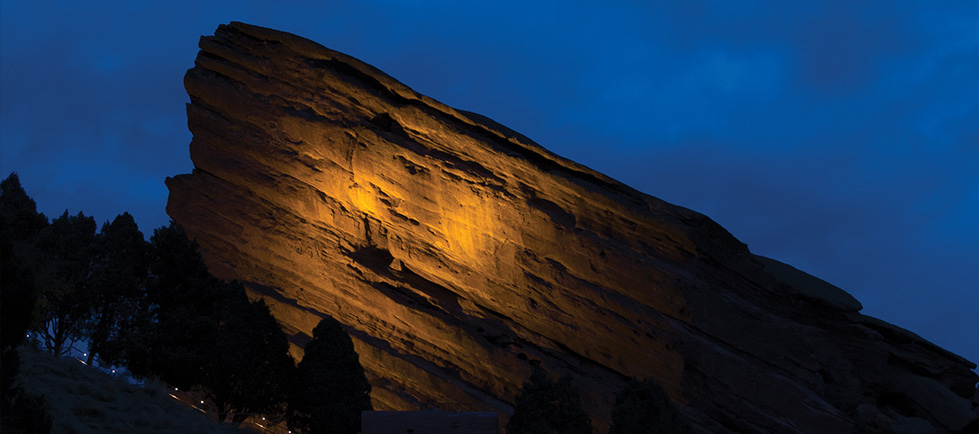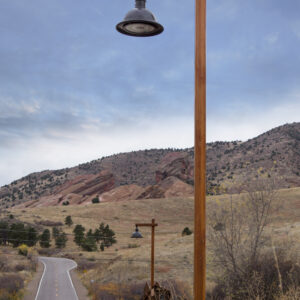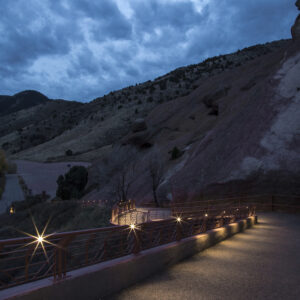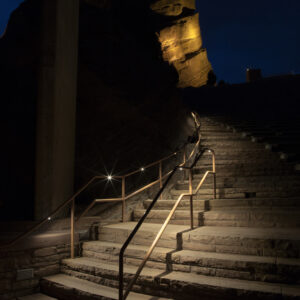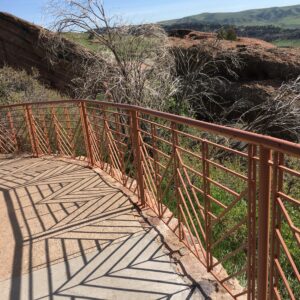In the rocky outskirts of Denver, Colorado sits one of the most well-known concert halls in the country: the Red Rocks Amphitheatre. With balanced acoustics and rich geological history, Red Rocks Amphitheatre continues to be a space with the perfect harmony of nature and music.
Going back to 250,000,000 – 65,000,000 B.C., the now Red Rocks Amphitheatre was a rock formation housing Diplodocus and Tyrannosaurus Rex. Their footprints are still visible in the Amphitheatre to this day. It was frequently a hideout in the Gold Rush for disputes between Native Americans and the new settlers coming to look for gold. In 1905, John Brisben Walker, Sr. brought Red Rocks and a performance by Mary Garden in 1911 revealed the perfection of the acoustics. The amphitheater’s construction began in 1935 and was opened in 1941 with a growing reputation. The rock formation and amphitheater have become infamous since, with iconic music performances leading to exciting updates in recent years to bring the amphitheater up to new standards.
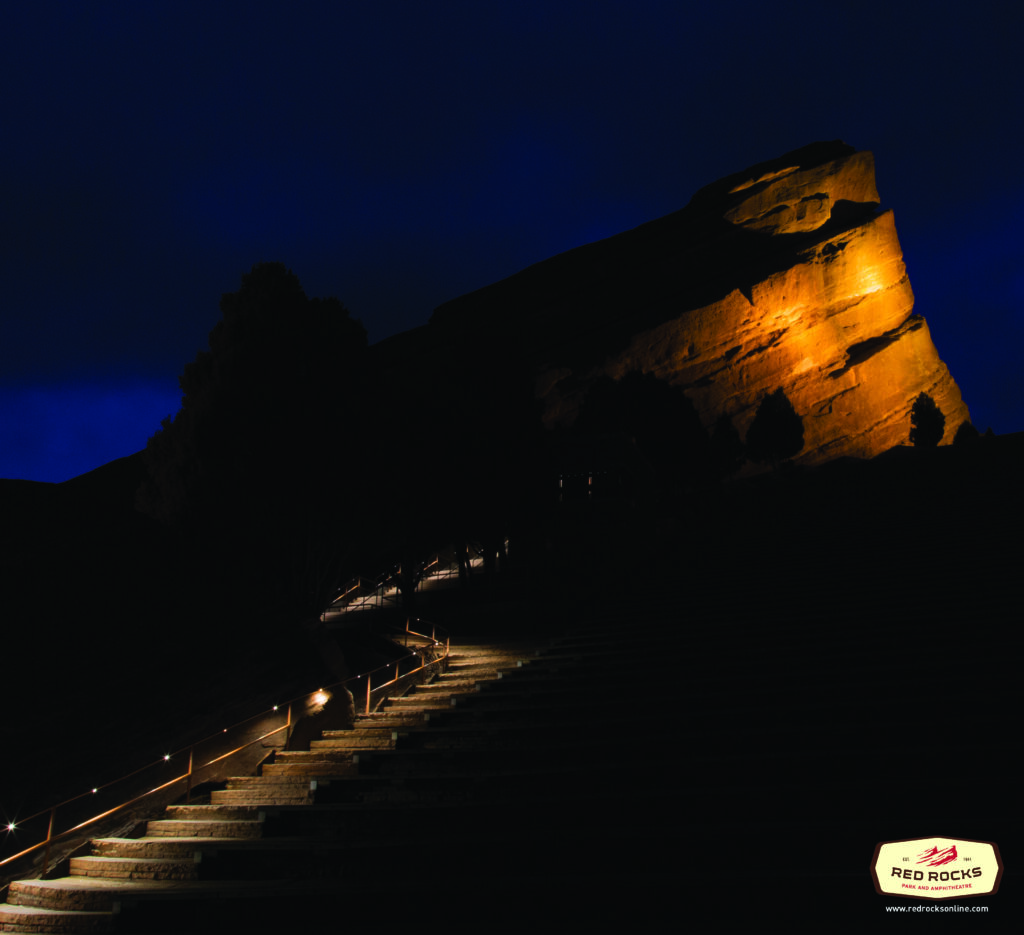
The architecture of the amphitheater itself was made with conscious decisions that incorporated both the structural elements of the rocks with the ability to make accessible, feasible seating. Architect Burnham Hoyt was chosen for the task and made over 125 drawings during construction that started in 1935. Elements had to be shifted during construction to account for the unique shape and structure of the formation and its musicality at 6,450 feet above sea level. As the years went on, technical issues like wind or lighting were brought forward and solved quickly. Targeting sustainability to align the theater with its natural roots, eco-friendly benches were installed in 2008-2009, beginning a cascade of changes to assert the parks commitment to protecting the natural forces that created its wonder. Having been ISO 14001 Certified since 2009, operations adhere to policies and procedures to minimize the environmental impact of the venue including lighting, electricity, and waste through the Red Rocks Depot, a waste management operation to aid in recycling and composting.
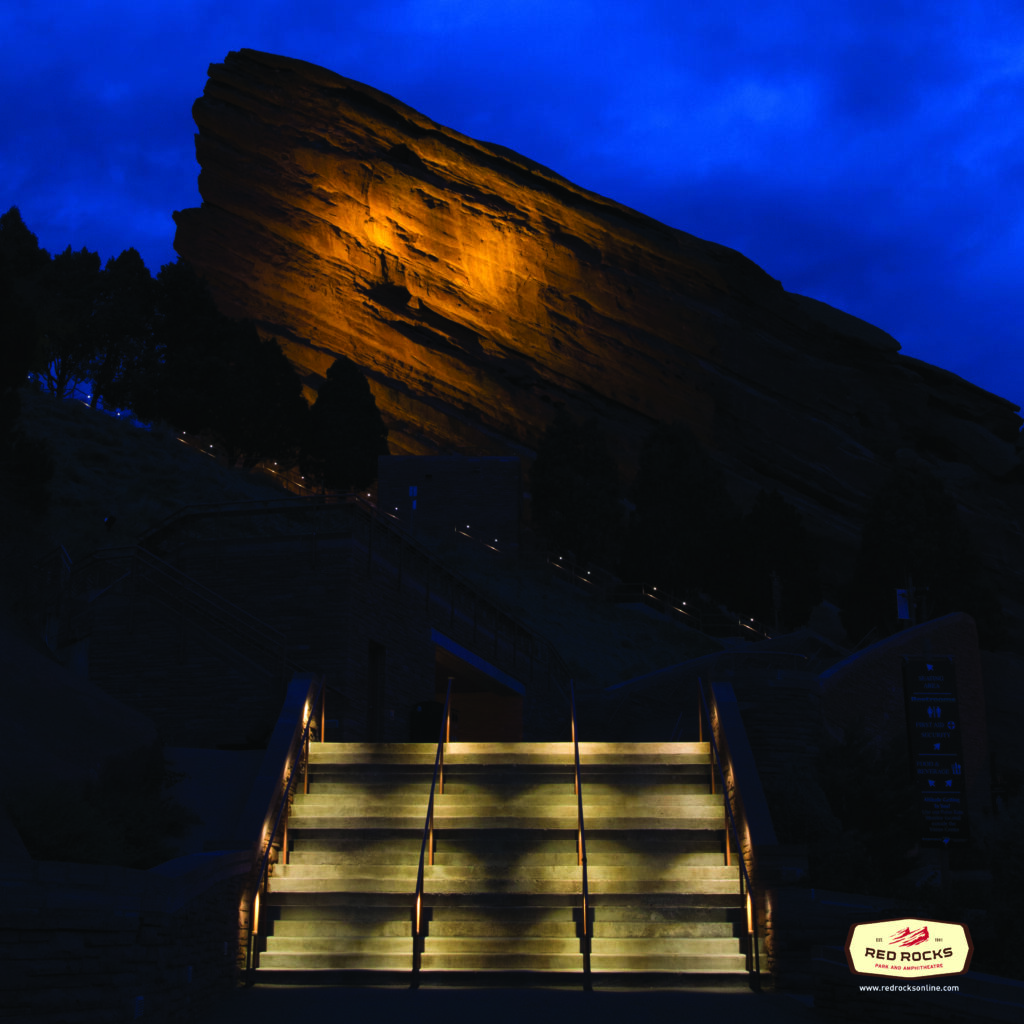
With steady improvements since 2019, the world’s only natural acoustically perfect amphitheater has taken on modern concerns of accessibility, sustainability, lighting, parking, and surface stability to ensure the venue can be experienced by all for decades to come. The latest improvements coming this year include alterations to maximize ADA accessibility for concert goers of all abilities. With increased space in the front rows for wheelchairs or other assistants, the venue also addressed lighting for increased visibility at circulation areas for greater ease accessing entries and exits. As the concert is the main event, the additional lighting couldn’t distract from stage lights while still maximizing output. Directed towards the stairs and slotted into the handrails, LEDpod fit both criteria as the perfect solution for both accessibility and light output.
In such an iconic venue, KLIK USA is thrilled to accent both the concert viewing experience and natural formations at Red Rocks! We are excited to keep up with all the progress and improvements now and into the future.
Photos: Greg McBride, MH Lighting

